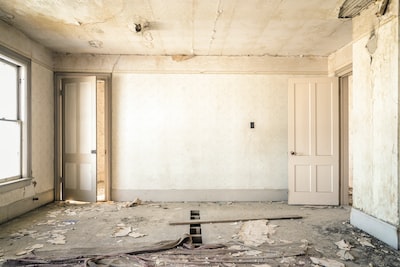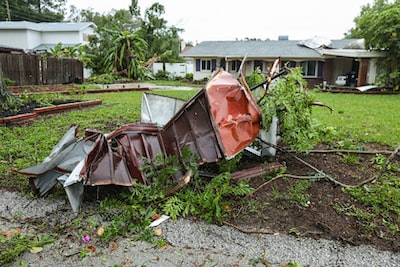Dry rot can be a nightmare for homeowners. It weakens the wood, compromises the structural integrity of your home, and can be expensive to repair if left unaddressed. In this blog post, we will walk you through everything you need to know about dry rot. From understanding what it is and how it affects wood structures, to detecting its signs and assessing the severity of the damage. We’ll also provide you with a step-by-step guide on how to repair dry rot damage and offer tips on long-term care to prevent future problems. By the end of this post, you will have all the tools and information you need to tackle dry rot like an expert and protect your home from its damaging effects.

Understanding Dry Rot: Causes and Effects
Dry rot, caused by fungi attacking moist wood, weakens and crumbles the structure. Timely repair is crucial to prevent further damage and restore affected areas. Proper ventilation and exterior paint are helpful in preventing rot. Prioritizing early detection and addressing the issue promptly can save both time and cost in the long run.
What is Dry Rot?
Dry rot, caused by specific fungi, is a wood decay that compromises its integrity. The affected wood becomes brittle and spongy, with visible cracks and strands of fungi. Swift action is necessary as it can spread rapidly and can affect surrounding wood. Treatment involves removing the affected material and treating the area with appropriate solutions.
How Does Dry Rot Affect Wood Structures?
If the foundation of a structure is deteriorating, it can greatly affect its strength by weakening the fibers and making it more prone to additional damage. It is essential to repair this issue in order to restore the integrity and durability of the structure, as well as preserve its aesthetic appeal. By effectively addressing the problem, the wood can be restored to its previous state of excellence.
Detecting Dry Rot Damage in Your Home
Detecting damage in your home is crucial for preventing extensive damage and maintaining structural stability. Look out for musty odors and crumbly, rotted signs you need to act fast. Use a utility knife and wire brush to inspect affected material, and differentiate dry rot from wet rot to determine the appropriate repair approach. Professional exterior dry rot repair restores the integrity of rotten wood.
Signs Exterior Dry Rot Repair is Needed
Signs that indicate the need for exterior dry rot repair include the presence of musty odors and deteriorating materials, which are indicative of decay. To detect this problem early on, it is important to inspect any exposed areas and utilize moldable epoxy filler. The identification of the issue is crucial in ensuring successful exterior dry rot repair and preventing additional harm. It is essential to promptly address any signs of damage in order to protect wooden structures. Professional repair services will comprehensively address the affected area and restore the integrity of the wood.

The Difference Between Dry Rot and Wet Rot
Dry rot and wet rot are two distinct types of decay caused by moisture intrusion and inadequate ventilation. Dry rot occurs when dampness affects the wood, while wet rot thrives in consistently damp conditions, both compromising the structural integrity of the material. It is vital to identify which type of problem is present to carry out targeted repairs and guide the restoration process. Professional services specialize in addressing both dry and wet decay, providing comprehensive solutions for rotten wood. They use specialized techniques to eradicate the cause of the problem and restore the affected areas to their original state, ensuring long-lasting results. Regular inspections and maintenance can help prevent further damage caused by these types of fungal decay.
Assessing The Severity of Dry Rot Damage
Determining whether damaged should be repaired or replaced is crucial. Distinct approaches are required for structural and non-structural damage. Promptly addressing the problem is essential for maintaining structural integrity. Proper assessment guides repair and restoration efforts, ensuring the affected wood’s stability through professional exterior dry rot repair services. Recognizing the severity of decay damage aids in comprehensive restoration efforts.

When to Repair vs. When to Replace?
Repairing or replacing dry rot depends on the severity and structural impact. Early-stage, non-structural damage can be repaired, while severe, structural damage requires replacement. Promptly addressing the decay prevents further deterioration. An expert evaluation determines the most effective approach for repair or replacement.
Structural vs. Non-Structural Dry Rot Damage
Distinguishing between structural and non-structural damage is crucial for effective restoration. While non-structural damage affects the wood’s surface and requires repair, structural damage compromises stability and necessitates replacement. Expert assessment is essential for accurately identifying and addressing each type of damage.

Tools and Materials Required for Exterior Dry Rot Repair
When addressing dry rot, the essential tools include wood hardener, epoxy filler, and a putty knife. Additionally, epoxy consolidant, polyester filler, epoxy resin, and polyurethane glue are vital for professional repair. Other necessary items are a plastic putty knife, paint scraper, and wire brush. Comprehensive repairs involve applying exterior primer and acrylic primer to ensure long-term protection against decaying.
Essential Tools for Exterior Dry Rot Repair
When it comes to dealing with exterior dry rot repair, it is crucial to have certain tools on hand. These include a putty knife, which is necessary for removing the affected area, as well as epoxy filler for restoring damaged fibers. A utility knife is also essential for making precise cuts. Additionally, it is important to strengthen the surrounding wood with a hardener and use an epoxy consolidant to repair the end grain. These tools play a vital role in addressing the damage and restoring the integrity of the affected areas.
Choosing the Right Materials
To achieve optimal outcomes when addressing the repair of dry rot on the exterior, it is essential to utilize appropriate materials. When dealing with areas that are exposed, putty proves to be highly effective, whereas deteriorating wood can be restored using epoxy resin. Polyester filler is the recommended choice for outdoor repairs, and to enhance stability, polyurethane glue can be utilized. For maximum effectiveness, it is advisable to apply these materials using a plastic putty knife.
By selecting the appropriate materials, you can address the damage professionally and satisfy your needs. It’s essential to assess the extent of damage before beginning repairs to ensure that the right products are used. Applying these products properly can help improve the durability and longevity of the repaired area and prevent further rotting.
Step-by-step Guide to Repairing Dry Rot Damage
Start by meticulously removing the deteriorated sections using a putty knife. Apply fungicide to stop any additional harm. Reinforce the affected areas with a hardener and use epoxy filler to fill the damaged portion for structural stability. Conclude by sanding and painting the repaired region to achieve a refined look.
Removing the Damaged Wood
When dealing with wood decay, inspecting the affected area is crucial to identify the extent of the damage. A wire brush can be helpful in cleaning the area thoroughly. Window sills and door frames should receive special attention as they are more susceptible to drying out. It is important to remove any crumbling wood delicately to prevent further damage, ensuring a comprehensive repair process. Additionally, treating the area with a wood hardener and filler can help restore it to its original condition and prevent future deterioration.

Treating the Area with Fungicide
When dealing with rotten fungi, it is essential to take a comprehensive approach to eliminate it entirely. Firstly, apply fungicide on the affected wood and ensure that you also treat the surrounding area. Afterward, use moldable epoxy to seal off the affected region effectively. When choosing an appropriate primer for the wood type, consider using an exterior primer such as acrylic primer for exterior trim repair. Regularly inspect your wooden features for signs of rotten wood to prevent further damage. Taking these precautions can help preserve your wooden items and enhance their longevity.
Applying Wood Hardener and Filling with Epoxy
The restoration of wood is an essential process that requires careful attention and the use of appropriate materials. To ensure optimal results, it is crucial to detect any potential problems early on and address them with suitable solutions. Using a combination of wood hardener and epoxy filler can help repair affected wood fibers and provide structural stability.
In addition to these repair techniques, applying epoxy resin to exposed wood can offer long-term protection against rotten wood. This professional approach is customer-focused and ensures that the restoration process is done correctly the first time, avoiding the need for repetition. By taking the necessary steps to restore your wood properly, you can prolong its lifespan and maintain its beauty for years to come.
Sanding and Painting for a Finished Look
To achieve a professionally finished appearance, it is important to sand the repaired wood until it is smooth. When it comes to painting, select exterior paint that is appropriate for the surroundings and a primer that adheres well to the wood surface. It is also important to consider curb appeal when choosing the paint color. Applying a new wood finish can help maintain its structural integrity and enhance its aesthetic appeal. Keep in mind that different types of wood may require specific types of finishes, so be sure to research which one is best for your project before applying anything. Additionally, proper preparation, such as cleaning and removing any old finishes or paint, can also ensure a successful outcome.
Long-term Care Tips to Prevent Future Dry Rot
To prevent future problems, regularly inspect window frames and exterior trim for signs of rotten wood. Ensure proper ventilation to deter the onset of any problem, and promptly address water damage to avoid further deterioration. Use epoxy consolidant for early signs of decay and apply wood hardener to exterior wood to prevent further damage.
How Often Should You Inspect Your Home for Decay?
Inspecting your home annually is an essential task to ensure the structural integrity of your property. It’s crucial to focus on checking the exterior wood, especially window sills and door frames, where moisture tends to accumulate. You should also examine the condition of the paint and surrounding wood for any visible signs of damage or poor ventilation. If you’re unsure or concerned about the extent of the damage, it’s recommended that you hire a professional for a thorough inspection. Early detection and prompt treatment can prevent further damage and save you from costly repairs in the future.
Exterior Dry Root Repair
In conclusion, it is essential to address the damage promptly to prevent further structural issues and maintain the integrity of your home. By understanding the causes and effects of dry rot, detecting signs of damage, and assessing its severity, you can determine whether repair or replacement is necessary. Equipping yourself with the right tools and materials and following a step-by-step repair process will ensure effective restoration. Additionally, implementing long-term care tips and regular inspections will help prevent future dry rot issues. Remember, if you are unsure or require assistance, it is always recommended to consult a professional for expert guidance and exterior dry rot repair services.

